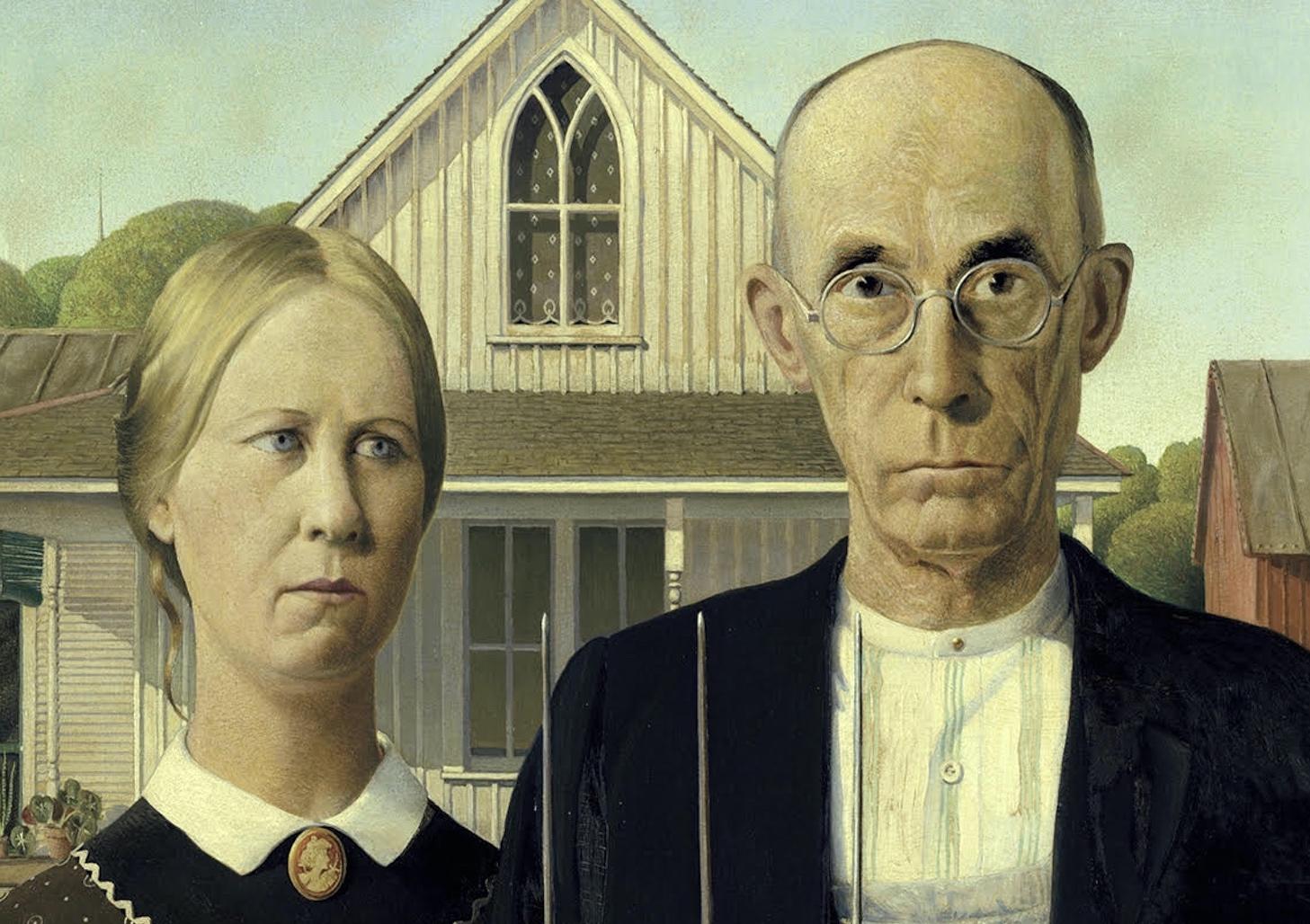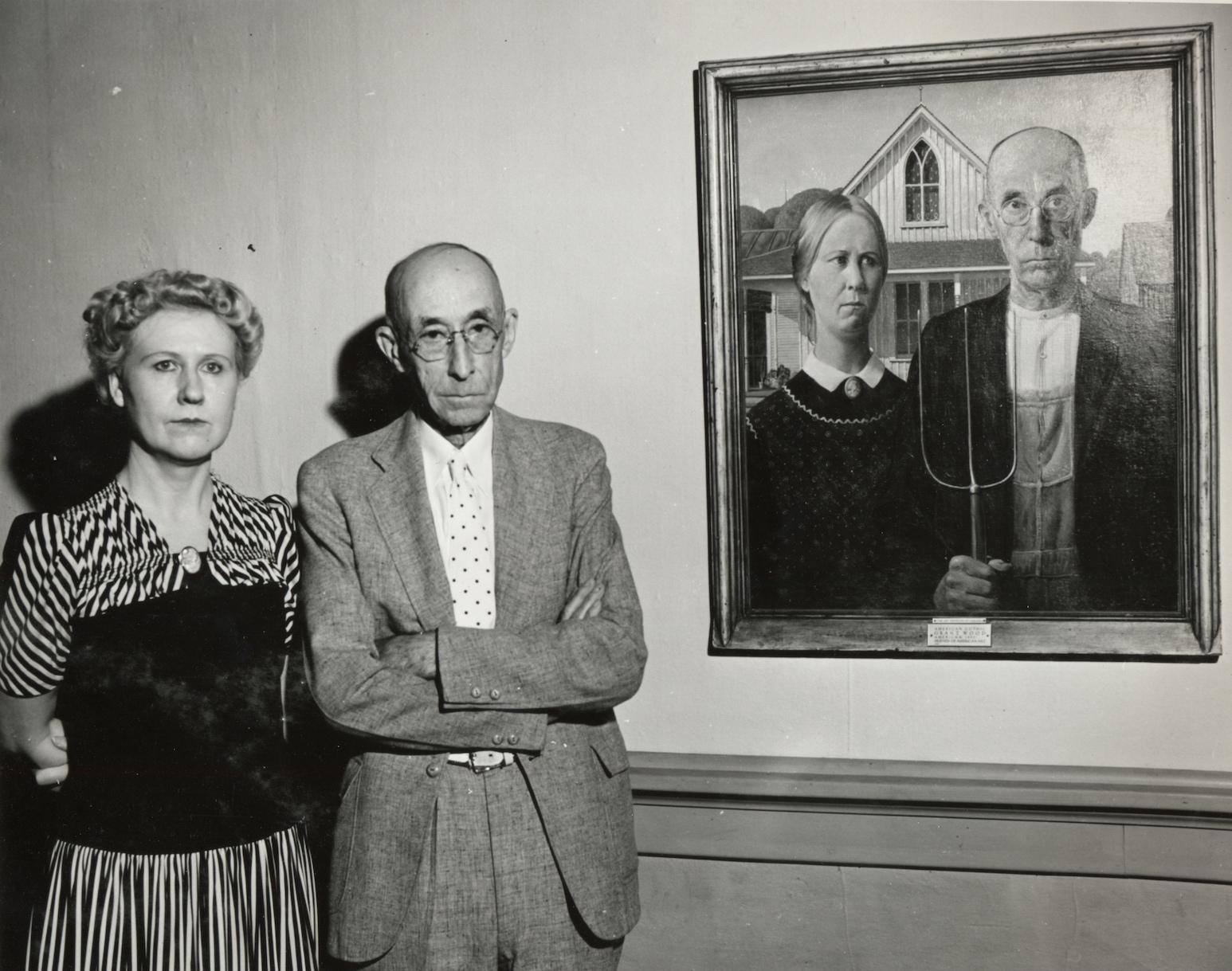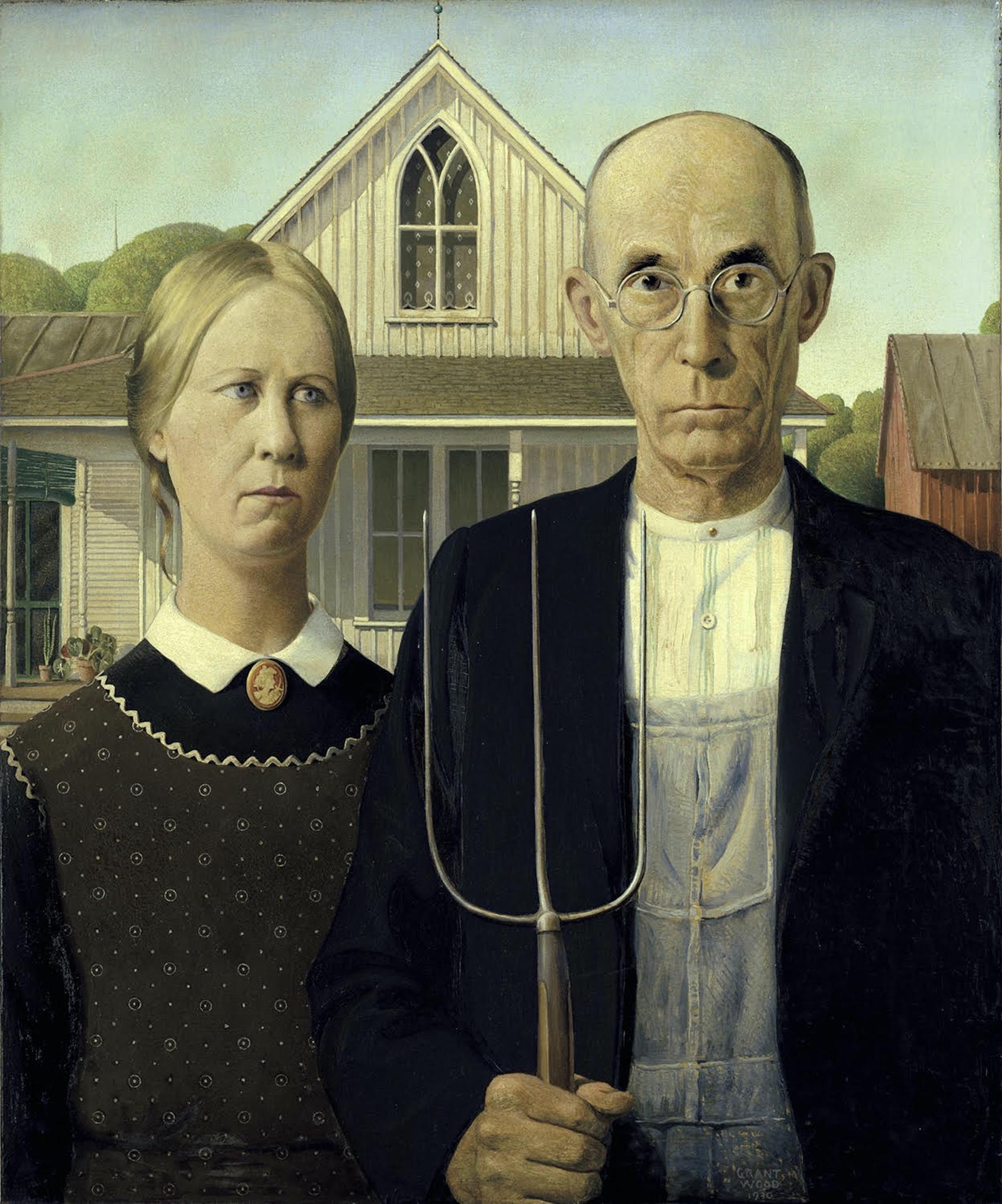Returning to Cedar Rapids, Grant enlisted his dentist, Dr. B. H. McKeeby, to play the role of “male farmer,” painting an accurate portrait of the doctor’s staid and somber stare. For the role of “female farmer,” Wood’s sister Nan, a chic blonde barely thirty years old, endured her brother’s dowdy depiction.
The work received only the bronze prize for the Art Institute of Chicago’s annual Norman Wait Harris Award, but it catapulted Wood to both fame and infamy in his day.
Wood, a proud midwesterner, was “firing back at what he [saw] as East Coast elitism,” noted AIC American art curator Sarah Kelly Oehler to Art & Object.
Exhibited months after the devastating 1929 global financial crisis, American Gothic hit a nerve with struggling, working-class Americans who bristled, not without reason, at East Coast elites who saw the work as proof that midwesterners were backward rednecks. Assuming Wood was not one of them, angry midwestern housewives penned a flurry of angry missives to editors across the country.































